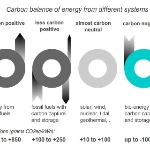
Waste Management: Chemosynthetic Production of Biomass Using Sewage Nutrients by CO2 Negative/RCP 2.6
Pitch
Chemosynthetic production of biomass, using sewage/marine nutrients, can provide carbon negative fuel/biochar to small or large communities.
Description
Summary

(RCP 2.6)
The STEM needed to radically expand the production of CO2 negative energy; reclaim water; and manage bulk nutrients such as sewage is extant and offers a realistic path to achieving the RCP 2.6 metastrategy.
-IPCC (WG3)-"..the combination of bio-energy, carbon capture and..storage (BECCS)...if biomass is grown sustainably, this combination may lead to negative emissions". This proposal is a BECCS class proposal.
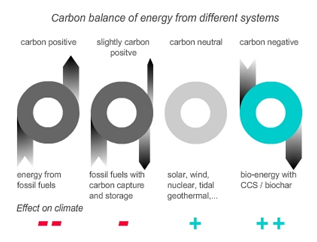
Marine Based WENN Tech:
Marine Biomass- International interest in sustainable marine biomass/biofuel production is high (a)(b)(c)(d)(e).

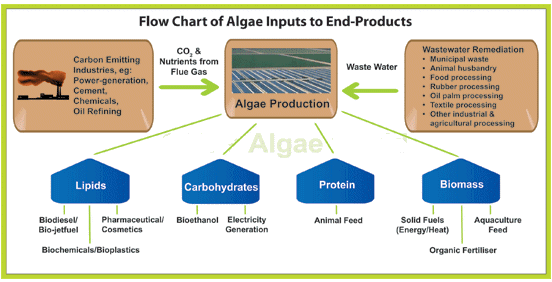

Marine Biomass Actors:
Projects under development (a)(b)(c).



REDUCTION OF CARBON DIOXIDE COUPLED WITH THE OXYHYDROGEN REACTION IN ALGAE- Chemo based biomass production (thus, biofuel/biochar).
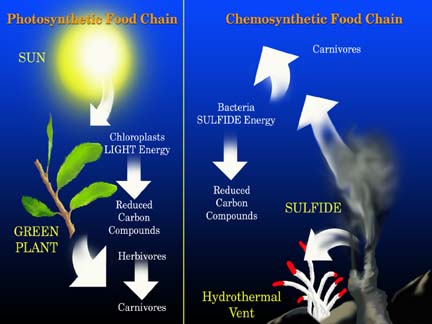
NASA/OMEGA Project. "..to grow algae, clean wastewater, capture carbon dioxide and..produce biofuel without competing with agriculture for water, fertilizer or land.".

IMBECUS Protocol Draft: Working draft of a marine centric STEM/intergovernmental governance scenario.
Land Based WENN Tech:
The above marine chemosynthesis tech can also be used in terrestrial tanks and many existing FF pipelines can be used as Dark Bio-Reactor Pipelines (DBRPs).
-Alabama Gets First-In-World Carbon-Negative Algae Biofuel- DBRP based biomass cultivation is lower in cost due to multiple factors (a)(b)(c)(d).

Future WENN Corridors?

Most utility corridors can be converted to WENN.

Due to the high 'public use need' for WENN conversion (i.e. existential need for AGW mitigation/adaptation and critical infrastructure up-grades), eminate domain laws (EDLs) can hypothetically be used to secure existing pipelines/lands (a)(b) for WENN use.

Using EDLs to acquire existing right-of-ways and the pipelines themselves reduces initial costs.

(First Biodiesel Pipeline...Or, future DBRP?)
Thus, the WENN can develop along the same utility right-of-ways (2M km+US). Adding advanced transportation and information technology to the above would be logical.





Category of the action
Reducing emissions from waste management
What actions do you propose?
To address the Judge's comments:
A) "I question the feasibility of utilizing the existing terrestrial utility infrastructure to implement the plan, either by utilizing existing lines no longer in service (usually for good reason) or by installing new lines along existing ROWs..".
In brief, this technology only needs closed tanks for cultivation and low cost tankage can be found/installed in many forms and locations. The conversion of existing infrastructure would require a system by system evaluation. However, the flexibility of the technology allows the WENN suite of technologies to be shoe-horned into...any....scale of community.
B) "The use of ocean-based reactors has promise on a pilot scale level but I fail to see it happening at large scale at this time simply due to political and public opposition to anything based at sea. There is a vast amount of infrastructure required to scale up this proposal...".
Marine industrial development is actually well supported on many different levels. The marine based WENN technology suite has the following unique combination of benefits and synergies:
- The WENN technology is self contained/nonpolluting;
- The WENN technology provides surface cooling for marine ecosystems which are under thermal stress such as coral forests and subtropical convergence zones (marine deserts);
- The WENN technology offers sustainable and scalable critical commodity production (i.e.carbon negative fuel, biochar, food, feed, organic fertilizer, polymers, freshwater etc.);
- The WENN technology can work well off-shore (no NIMBY factor);
- The WENN technology would significantly reduce pressure on local fisheries as the WENN technology can support mariculture as well as provide energy, water, food, feed, fertilizer, freshwater etc.;
- The overall WENN Protocol allows...all....nations to become bio-energy, protein, water and organic fertilizer/biochar etc. independent as the marine commons are open to all nations. The smallest of the land-locked nations can become as productive as the largest nation owning vast ocean access;
- The WENN Protocol offers a new form of physical territory in the form of artificial islands which allows...all...nations to expand into the oceanic space without displacement of neighbor/nature.
Again, the smallest land-locked state can eventually control as much WENN production toolsand oceanic space as even the largest nations. The WENN Protocol is designed to be a strong equalizer in the areas of critical commodity production as well as a global scale means for climate change mitigation and adaptation;
- The WENN Protocol offers a global scale economic stimulus, lasting for a number of decades, as the the infrastructure up-grades to the WENN Protocol is completed. The global scale critical need for jobs can be addressed, on many levels, through establishing a standardized STEM/funding package such as offered by the WENN Protocol.
The primary limiting factor for such a global scale economic stimulus is dictated by the carrying capacity of the oceans....which is vast;
- The WENN Protocol, employed on a large enough scale, can significantly address ocean acidification in critical littoral zones as well as on a global oceanic scale while reducing atmospheric CO2 levels;
C) The dark bio-reactor (e.g. pipeline/tank equipment) cost can be radically reduced through the use of HDPE plastic components which can be produced using bio-oil and post consumer waste plastics. Thus, the WENN equipment/process can provide the basic fabrication material needed for further (vast scale) expansion.
On a vast scale, the carbon locked into the HDPE dark bio-reactors can itself represent a meaningful form of carbon sequestration.
The above list of benefits and synergistic values is not exhaustive.
A general narrative for the WENN Protocol:
"Today we need a global Apollo programme to tackle climate change; but this time the effort needs to be international. We need a major international scientific and technological effort, funded by both public and private money.". (Excerpt from: A GLOBAL APOLLO PROGRAMME TO COMBAT CLIMATE CHANGE)

The above advocates for massive international concentration of political and capital strength on deployment of solar energy means and methods to achieve the needed CO2 reductions. This position is understandable and supportable.
However, carbon neutral energy means and methods, such as solar energy conversion, are no longer adequate to forestall drastic climate change. At this time, the full spectrum of the water, carbon negative energy and nutrient nexus management needs must be factored into any form of 'Global Apollo Programme to Combat Climate Change'.
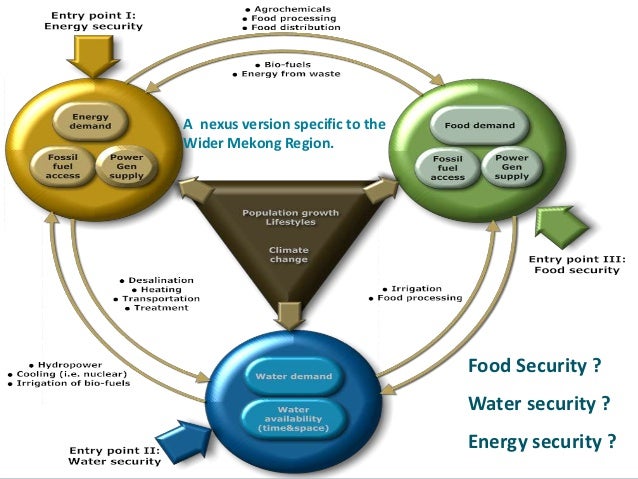
Primary action/principle being proposed: Vast scale use of chemosynthetic and or heterotrophic cultivation of biomass as a means for urban, rural, marine and overall global scale water, energy and nutrient nexus (WENN) management.
Funding for this WENN management regimen can be achieved through the use of environmentally focused intergovernmental agreements, market based funding instruments and/or non-profit funding programs such as:
1) The most forward leaning intergovernmental climate change mitigation/adaptation agreement is summarized by the US Department of State. In part:
- Commitment by developed countries to the goal of mobilizing jointly USD $100 billion per year by 2020 from public and private sources, to address the needs of developing countries in the context of meaningful mitigation actions and transparency on implementation
- A call to establish the Green Climate Fund, a new multilateral trust fund designed to foster low emission and climate resilient development and catalyze private sector investment.
"..the Fund will promote the paradigm shift towards low-emission and climate-resilient development pathways by providing support to developing countries to limit or reduce their greenhouse gas emissions and to adapt to the impacts of climate change, taking into account the needs of those developing countries particularly vulnerable to the adverse effects of climate change.".

In the non-intergovernmental space, a growing number of important market funding paths are being developed. Such as:
2) Green Bond Principles 2014: Voluntary Process Guidelines for Issuing Green Bonds:




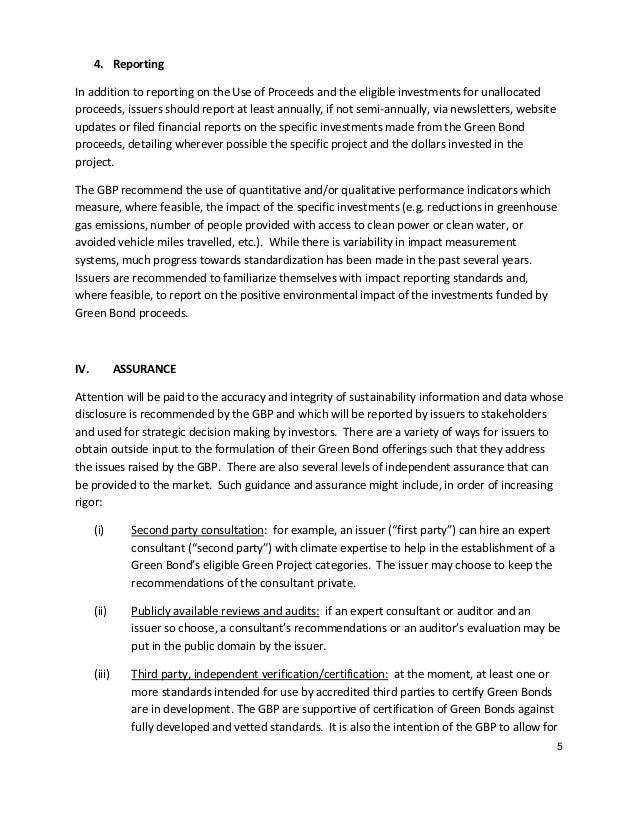
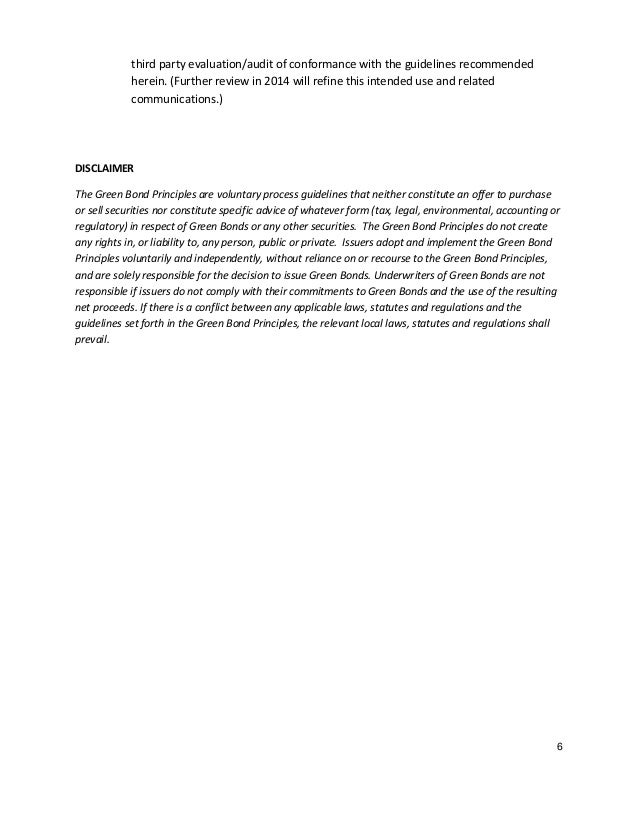
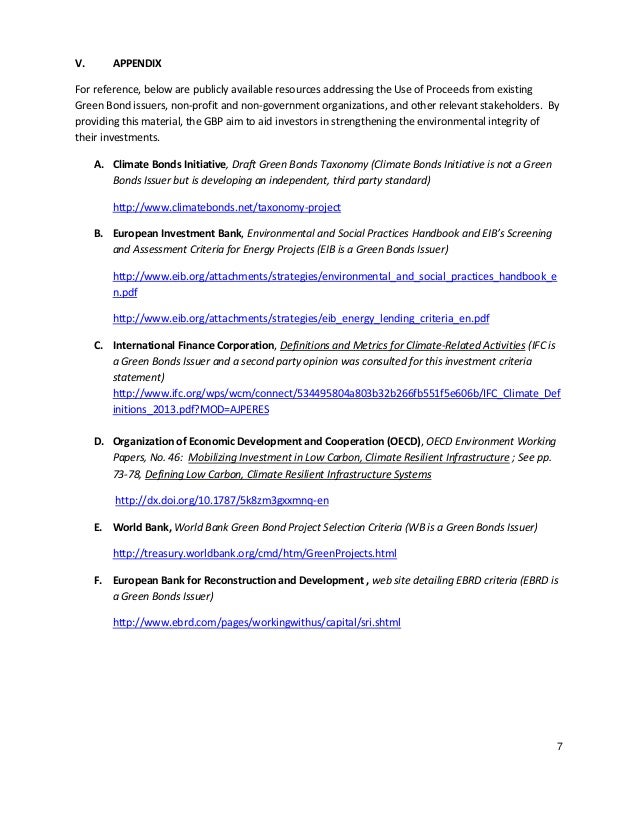
"World Bank report highlights necessity of CCS"
"The report, entitled Decarbonising Development –Three Steps to a Zero-Carbon Future, highlights the importance of ensuring sufficient financing for low-carbon technologies, in addition to having a stable carbon price in place. The document quotes the IPCC’s 5thAssessment Report (5AR) in noting that a possible range of €28 billion to €323 billion in annual investment would be needed for low-emission-generation technologies, such as CCS and renewables, between 2010 and 2029.".
The WENN Protocol offers a realistic and short-term path to meeting the above proposed budget and World Bank primary goal of providing "Funding for new technologies that permit significant reductions in greenhouse gas (GHG) emissions".
"Strengthen national preparedness and resilience, building a ready and resilient Nation, with the ability to plan, prepare for, and respond to disasters. Proposals for climate resilience coupled with a restructured DHS grant program will help create robust national preparedness capabilities.".
5) "Transforming the Traditional Municipal Bond Market to Finance Environment-Friendly Green Projects"
"In 2013 Massachusetts became the first state in the U.S. municipal bond market to issue these so-called green bonds. The offering was so successful that Massachusetts tripled the volume of green bonds offered in 2014, selling $350 million in bonds to individual and institutional investors this month. According to Massachusetts Treasury officials, the demand for green bonds far outpaced the supply. The Treasury reportedly received received $1 billion in buy orders for the $350 million bonds offered. billion in buy orders for the $350 million bonds offered.".
6) ‘Conservation Bonds’ Take Green Financing to the Next Level
"Green bonds, as described by the World Bank, “are fixed income, liquid financial instruments that are used to raise funds dedicated to climate-mitigation, adaptation, and other environment-friendly projects.” When issued by multilateral institutions such as the World Bank, or agencies of national governments such as the German Development Bank, such bonds may carry low, or even concessionary interest rates. Furthermore, a number of private financial institutions, attracted by the reliable returns on projects financed by green bonds, have entered the marketplace.
The Green Bond market is rapidly growing. First issued by the World Bank in 2007, the green bond market grew to The Green Bond market is rapidly growing. First issued by the World Bank in 2007, the green bond market grew to $11 billion in 2013. As reported by the World Bank, some $32 billion of green bonds have been issued by multilaterals, governments and corporate issuers from January through October 2014, and could surpass $40 billion for the year.".1 billion in 2013. As reported by the World Bank, some $32 billion of green bonds have been issued by multilaterals, governments and corporate issuers from January through October 2014, and could surpass $40 billion for the year."
"Green bonds were created to fund projects that have positive environmental and/or climate benefits. The majority of the green bonds issued are green “use of proceeds” or asset-linked bonds. Proceeds from these bonds are earmarked(link is external) for green projects but are backed by the issuer’s entire balance sheet. There have also been green "use of proceeds" revenue bonds(link is external), green project bonds and green securitized (link is external) bonds.".
"The accredited institutions include the following:
- Centre de suivi écologique (CSE) from Senegal, which focuses on combating desertification and protecting coastal areas. In 2010, CSE was the first national institution to be accredited and to implement a project through the Adaptation Fund , the first international climate fund to take the pioneering step of accrediting developing country institutions.
- Fondo de Promoción de las Áreas Naturales Protegidas del Péru (PROFONANPE) that specializes in funding biodiversity conservation and managing protected areas. Like CSE, PROFONANPE is also accredited to the Adaptation Fund.
- the Secretariat of the Pacific Regional Environment Programme (SPREP), an intergovernmental organization of Pacific Island countries and territories, based in Samoa, which focuses on protection and sustainable development of the Pacific region’s environment
- the Acumen Fund, Inc. (Acumen), a well-respected private venture capital fund that invests in developing country entrepreneurs and businesses working to alleviate poverty and advance sustainable development. The social impact investment fund works on improving the lives of low income communities in Africa and Asia, especially in healthcare, agriculture and clean energy.
Three international organizations were also accredited: the Asian Development Bank (ADB), Kreditanstalt für Wiederaufbau (KfW), and the United Nations Development Programme (UNDP).".
9) "Major International Research Initiative Launched to Improve Food Security for Developing Countries - Bill & Melinda Gates Foundation." (a).
"Listening to farmers and addressing their specific needs. We talk to farmers about the crops they want to grow and eat, as well as the unique challenges they face. We partner with organizations that understand and are equipped to address these challenges, and we invest in research to identify relevant and affordable solutions that farmers want and will use.".
Who will take these actions?
This proposal recommends the formation of a 'Benefit Corporation' (B Corp.) as the primary agent of change. The Board of Directors of the B Corp. should be populated by actors within the IPCC class of science communities as well as actors from other more specifically focused science based groups.
Many of the working groups within intergovernmental treaty organizations, such as the IMO, CBD etc. also offers relevant and robust knowledge bases needed by the Board of Directors of the WENN B Corporation.
Further, the civil society class of organizations and institutional investment leaders should be equally represented on the Board. Clearly, the long term viability and effectiveness of a global scale WENN Protocol (e.g. WENN B Corp.) will depend upon the above actor's ability to maintain a strong altruistic perspective while insuring that the B Corp. investor's profit expectations are well supported/protected.
Such dual fiduciary responsibilities needs to become the new norm.
At the broader level of getting the public on-board, a commonly voiced opinion on the issue of; 'Who should do what about global warming'...we often hear the sentiment which conveys the view that:
'We' can no longer afford select groups exerting self centric/predatory exploitation of our planetary environment, resources and political leadership. This global scale crises requires that 'We', as a species, need to get beyond the 'us-against-them' value dynamics.
The B Corp. dual value compromise may be the dynamics needed to realize a unified view of both climate change mitigation/adaptation and profits.
As many students of this overall complex of problem sets and issues may realize, climate change clearly places all of humanity, and the vast majority of other life life forms on this planet, in one boat....and that boat is clearly sinking.


Where will these actions be taken?
Universal/land/marine/urban/rural...whereever cultivation tanks, sewage and or marine nutrients can be combined.
What are other key benefits?
By establishing a universal water/energy/nutrient nexus (WENN) management paradigm, it may become possible to manage the global carbon cycle to the degree that we may prevent such environmentally catastrophic events such as:
-Arctic Methane Tipping Point (a)(b)(c)
-super cyclones

-Severe droughts/El Nino/El Nina conditions

-Expansion of Low-Productivity Regions in Mid Ocean Gyres

At the socioeconomic level, the vast scale of the oceanic biomass production platforms represent a new form of Movable Artificial Islands which can be used to provide housing and jobs for displaced peoples (a) and or for those simply wishing to earn entry level and middle class incomes.

At the policy level, the above offers lowest risk options for managing many of the critical climate and socioeconomic problems we now face. And, the costs can be financed through the sale of Carbon Investment Bonds (a) etc. which may also function as a foundation for a unified international carbon price structure.
How much will emissions be reduced or sequestered vs. business as usual levels?
This technology would allow for local/global compliance with the goals of RCP 2.6. and the IPCC Working Group 3 (Mitigation).
THIS PROPOSAL IS A SUITE OF CARBON NEGATIVE TECHNOLOGIES!!!
What are the proposal’s costs?
The bulk of the information needed for this sector is addressed in the ‘What actions do you propose?’ sector.
In summary: The WENN Protocol can provide a strong tool for many of the above funding paths. Once initial (relatively small scale) real world deployment of the WENN technology suite has been achieved and critically reviewed and accepted by the many potential funding actors, rapid expansion of a globally standardized WENN Protocol/STEM suite can be started around the planet.
Time line
The entire technology suite called for in this proposal is extant and thus this proposal can be initiated today.
The 5-15 year time frame can see vast scale deployment and thus significant advancement toward the goal of achieving a carbon negative emissions scenario (i.e. RCP 2.6).
In brief, the core technology (chemosynthesis) can be used on land or sea and only requires closed tanks and a source of raw nutrients such as sewage, animal solid waste and/or marine nutrients. As such, the core technology can be used at all levels of communities. Even the smallest village can set up this system with off-the-shelf HDPE tanks and a relatively simple compilation of ancillary components.
The larger towns and cities can incorporate this suite of technology during routine road repairs or initial road construction or undertake coordinated/preemptive conversion to the WENN tech package in association with other communities (see below).
The WENN suite of technologies are rather simplistic on their own as well as when they are used in unison which creates the desired synergistic effect of the carbon negative WENN concept.
Thus, the technology is not the limiting factor to implantation. The primary limiting factor is found within the economic spectrum. And, there is currently a flush of long-term 'Green' funding/grant opportunities available or being developed.
The primary benefit of this proposal is that it is offering not just the core technology but also the insight into these new 'Green' funding paths.
With this WENN tech package, which meets the climate mitigation and adaptation objectives of the 'Green' bonds/grants etc. coupled with a multi-community cooperative purchasing power, such as we find in the Cities for Climate Protection program, a critical mass of momentum might be able to be reached within a relative few years.
Within the 15-50 year time frame, global scale critical mass acceptance of the WENN suite of technologies and funding paths may be universally established.
Related proposals
The below 4 proposals are combined as they have common needs/solutions:
Land Use: Agriculture, Forestry, Livestock
Global-Energy-Water Nexus
The below 2 proposals are combined as they have common needs/solutions:
The below 4 proposals are combined as they have common needs/solutions:
Waste Management-Urban Level Energy/Water/Nutrient Nexus Management Through Chemosynthesis
Atypical ideas for CO2 Neutrality-Urban Level Energy/Water/Nutrient Nexus Management Through Chemosynthesis
Urban-Energy-Water Nexus- Urban Level Energy/Water/Nutrient Nexus Management Through Chemosynthesis
The below 5 proposals are combined as they have common needs/solutions:
Energy solutions for Latin America
United States’ Climate Action Plan
The below is a one-off proposal
References
Please watch this NASA video while noting the primary point source of vast scale CO2 emissions from highly urbanized regions.
Methane Hydrates: Natural Hazard or Natural Resource? - Perspectives on Ocean Science: "Explore naturally occurring frozen methane deposits under the sea with renowned geochemist Miriam Kastner and discover whether or not they are a hazard to climate change". This 1 hr. presentation is a critical reality check for all involved in the climate change mitigation/adaptation problem sets as it shows just how vulnerable we are to radical, even catastrophic, climate change. This video is what has motivates me to work towards large/vast scale solutions.
Cities for Climate Protection program
Energy–nutrients–water nexus: Integrated resource recovery in municipal wastewater treatment plants
Chemosynthesis/Oxyhydrogen Reaction in Algae
Hydrothermal conversion of biomass to fuels and energetic materials
AVA-CO2 Achieves a Breakthrough in Phosphorus Recovery and Introduces the "AVA cleanphos" Process
The Blue Biochar Initiative (BBI) website
Gigantic Ocean Vortices Seen From Space Could Change Climate Models
Biochar production from freshwater algae by slow pyrolysis:
Fast pyrolysis of microalgae remnants in a fluidized bed reactor for bio-oil and biochar production
Bio-oil and bio-char characterization from microalgal biomass:
Algal biochar – production and properties:
The Sustainable Shipping Initiative
"Proposed multifunctional OTEC plant
Advances and Innovations in Biochar Production and Utilization for Improving Environmental Quality
An Engineered Microbial Platform for Direct Biofuel Production from Brown Macroalgae
Establishing offshore autonomous communities:current choices and their proposed evolution
